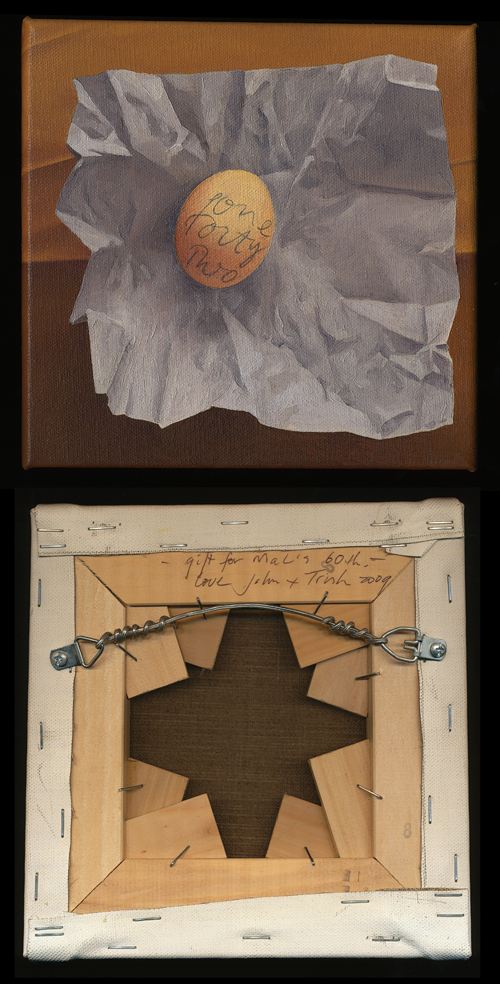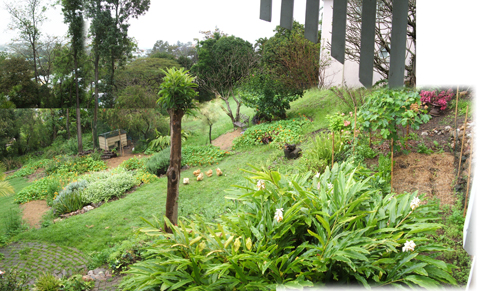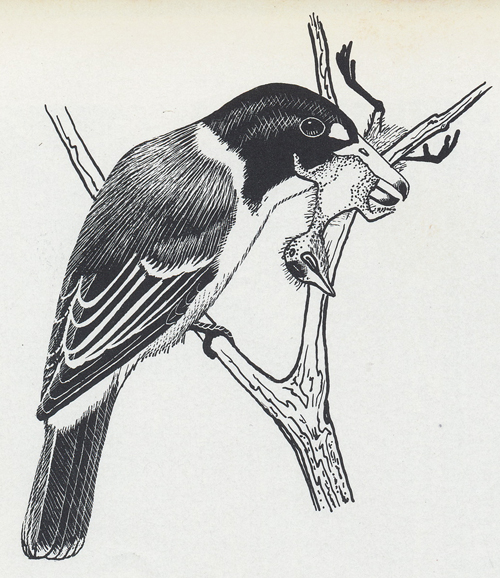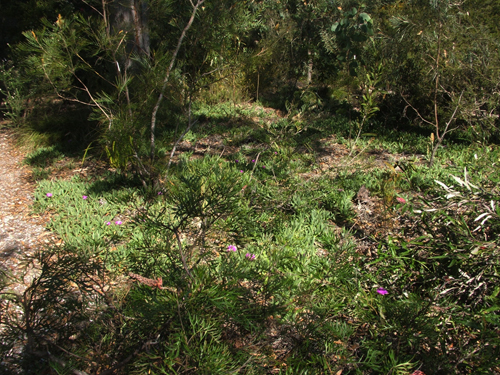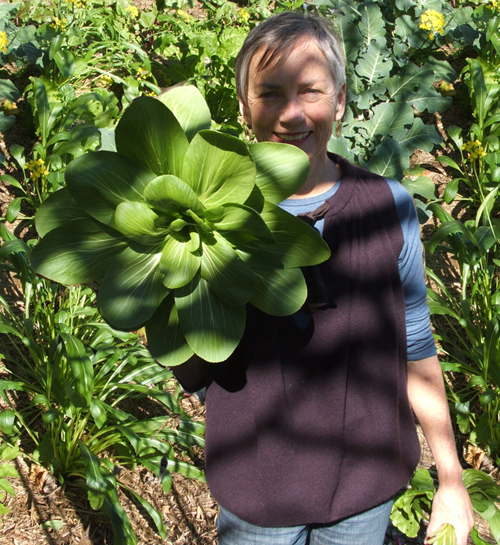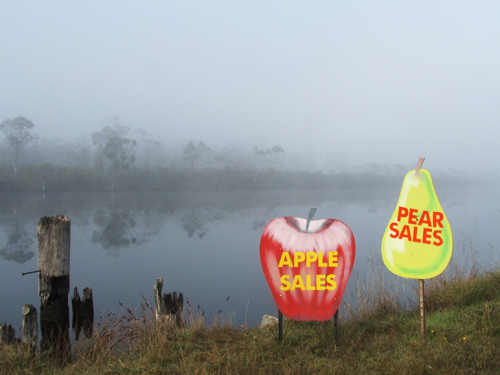Currently three of our five Buff Pekin Bantams spend most of their day foraging in the garden or resting in the deep and fragrant shade of the Galangal, a plant which has good associations for the little flock. The other two are pre-occupied with secret egg business in the dark of the chook house. On this batch of hens arrival, two and a half years ago, the chook pen encompassed this vigorous ginger plant and they would make dust baths or occasionally lay an egg or two, if the available nest boxes were occupied, between the thick green stems. But this winter I made use of the pen's fertilised soil to plant spinach, beetroot and chinese greens and the hens yard was moved to a new spot.
I'm always charmed by the birds friendly, busy nature and observing their behaviour; noticing how they interact, hunt and forage while keeping an eye out for danger, is endlessly interesting to me. Sometimes I think my affection for the group is like a kind of professional admiration, their seemingly impractical feathered feet and puff pants belie such an impressive operational effectiveness.
Egg production varies with the seasons and their own cycle - but we never need to buy eggs and often have spare to give away. They don't have names, but come when I talk to them or earnestly follow me to lock them back into safety. We do however pencil a number onto each egg, to know which to eat first and I always prefer when its mal's graphic hand that does the numbering - as you see it was the subject of this still life a 60th birthday gift to mal from our friend, artist John Honeywill.




